Thirteen Months or Twelve?
If you’ve read my recent posts, you’ll know that I am enamored of Eleanor Parker’s book Winters in the World: A Journey Through the Anglo-Saxon Year. In this book, she writes that during the Middle Ages, a 13th month was added in summer, to even out the lunar calendar to better match the solar. December & January were one month, “Geola,” a possible origin for the word “Yule.” During those extra-month years, what we call June was “earlier Lida” and July was “later Lida.” 1 The word meant “gentle” or “navigable,” presumably referring to the month’s ideal travelling and sailing weather.
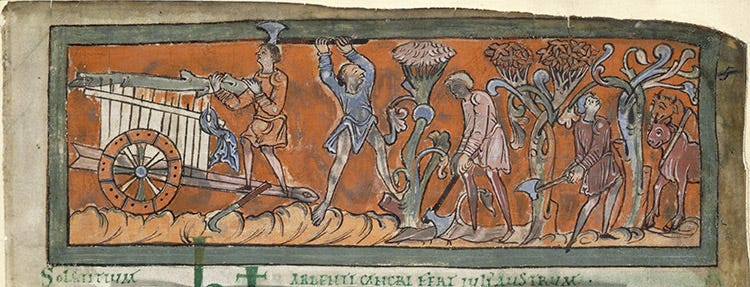
The early Anglo-Saxons, like their predecessors, recognized only two seasons, winter and “sumor,” which is why the winter solstice was also known as mid-winter and the summer solstice as mid-summer/ Midsomer, as opposed to how we view them, as marking the beginning of those respective seasons. If winter begins in October, then late December makes more sense as its midpoint. I’m especially relieved to finally understand how “In the Bleak Mid-Winter,” a poem that was later set to music, can be understood to refer to Christmas, rather than to early February. I can’t be the only one who’s pondered this, right?
Tangent time! The aforementioned poem was written in the Victorian era by Christina Rossetti, who also modeled for the Pre-Raphaelite painters,2 one of whom was her brother Dante. Around 1848-49, at the age of 18, she modeled for his Virgin Mary in the painting below; their mother modeled for St. Anne, the knowledge of which, I think, makes the domestic scene that much more touching. Christina reprised her role as Mary in his 1850 painting of the Annunciation, with their brother William as the archangel Gabriel. If you’re interested in learning more about the Pre-Raphaelites and the fascinating women who contributed to the movement as models and artists in their own right, there is a fascinating podcast episode here (mature audiences only) or you can read any number of books about them by Jan Marsh.
Forward to the present day. Generally, in our climate here, June and July can tend to meld together; long solstice-bordering days of sunlight, heat, green growth, of planting & tending crops. But June was really freaking weird this year: drought, arid wind, hazy skies, travelling smoke, and air quality warnings; failed seeds, stunted seedlings, dust-dry soil, and fewer blooms. I did not like feeling trapped indoors; it was annoying, frightening, and frankly a bit apocalyptic. We did venture outdoors on bad air quality days, since we needed to go to work and participate in the world, but our lungs did protest. The heavy, chemically foul air brought with it headaches and irritability/ anxiety as well. In a rare Anglo-Saxon poem that speaks of sorrow in summer instead of winter, the female narrator cries:
…under the oak tree, through this earthy cave.
There I must sit all the summer-long day,
there I may weep for my exile…
—The Wife’s Lament, from The Exeter Book, translated by Eleanor Parker
So, although my pseudo-exile was inside a 1950’s ranch house with all the modern conveniences rather than a creepy ancient barrow-tomb, I’m hailing July as a fresh start to summer, with it’s blessedly blue skies alternating with heavy rains that are healing our gardens and fields. I’m filled with renewed gratitude for fresh air, the privilege to work the soil, and yes— the long summer days. Welcome, later Lida!
We Have a New Queen
It’s been a tense month, too, regarding our beehive. During his routine hive check June 13, Phillip couldn’t find the queen. He did see supercedure cells, which essentially means a hive is growing their own new queen(s), which they do when their current queen is dying, dead, or just not up to their standards anymore. Subsequent hive checks revealed slowly unfolding drama: signs that 2 queens had hatched, after which hopefully 1 survived; the long wait to see if the new queen would make it back from her mating flight; then looking for signs that her flight was successful, in the form of new brood and most importantly, a sighting of the queen herself. Praise be, today was that day! We have a new homegrown queen and she is gorgeous. The worker bees made good use of their queen-less weeks, making vast stores of honey.
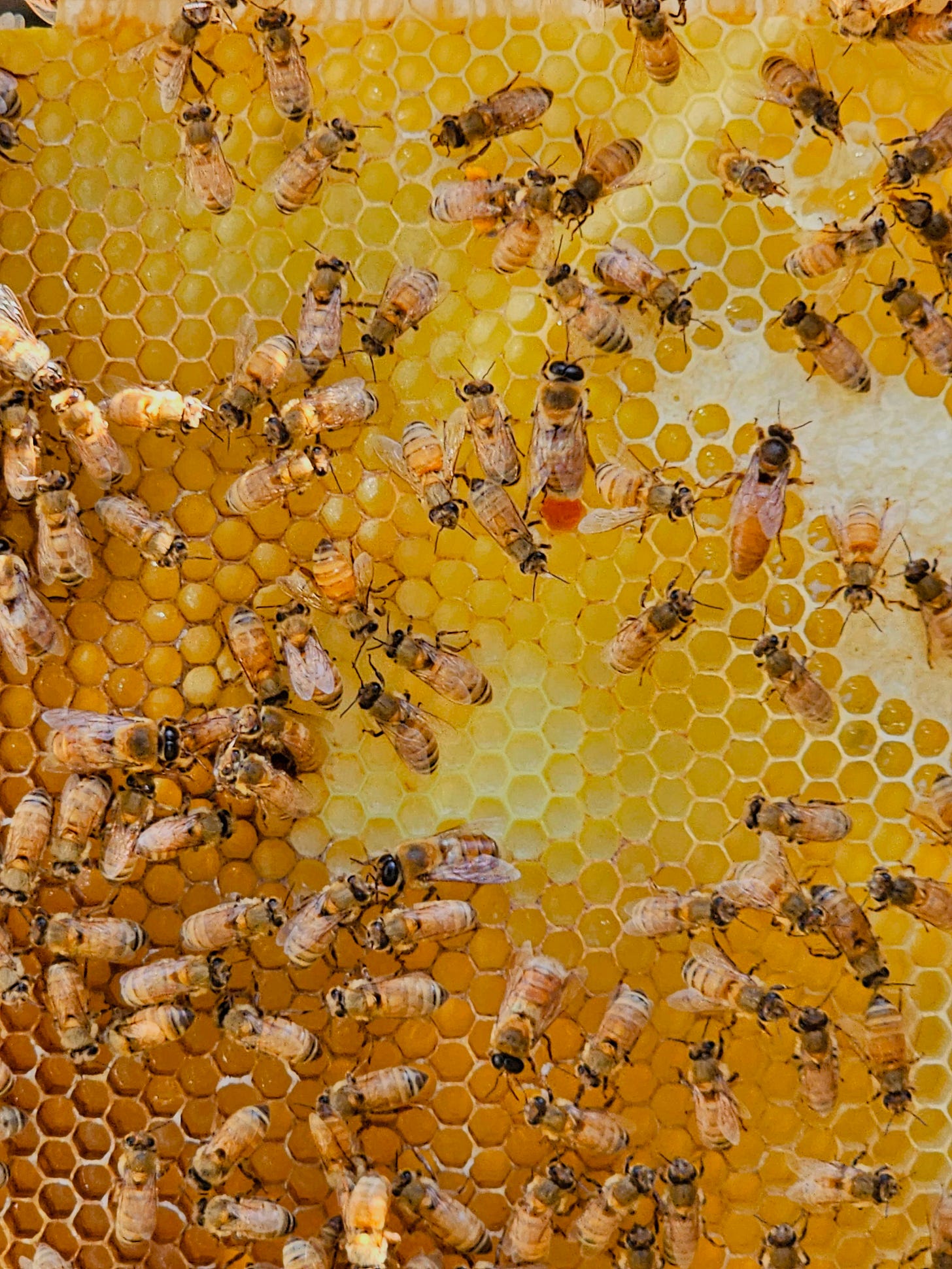
What’s Growing in the Garden?
Mostly leafy greens! We’ve been eating a whole lot of salads. Finished harvesting the turnips, beets, & radishes, and used those greens to make nutritional powder to add to smoothies and sauces. Strawberry season (which the birds & bunnies did share with us, you’ll be glad to know) is nearly at an end, in time for the raspberries to have their time in the spotlight. Then maybe the blueberries, if the birds don’t get them all first.
Also growing well are the grapes. So well, in fact, that the garden fence has been overtaken by grapevines. They’ve come tumbling over into the garden, crushed the pea and bean plants, and changed the pattern of sun and shade there. But they’ve also created a magical leafy wall that hides the garden from street view, which adds to the feeling of being off in the Shire or the Secret Garden.
The elderberry bush is in flower, which is glorious, as it is about 7 foot tall and covered in bees. It started as a tiny graft stuck in the ground 2 years ago, so its current appearance seems miraculous. As ever, the volunteer tomato plants are by far the frontrunners over the ones planted from seed, though we’re nowhere near harvesting tomatoes yet. The corn was below “knee-high on the 4th of July” and the stalks knocked flat by the recent rain, but as long as we can keep hacking out the carpet of pigweed under them, they should do alright. The mini-orchard bore a snack-size serving of cherries. Friends offered us access to their huge backyard cherry tree, though, so we put away enough cherries in the freezer to save for jam making. The pears & peaches seem fine. Peach tree thriving despite its early fungal infection.
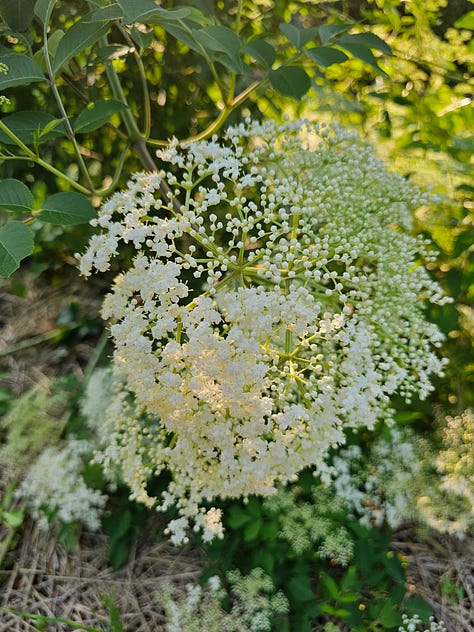
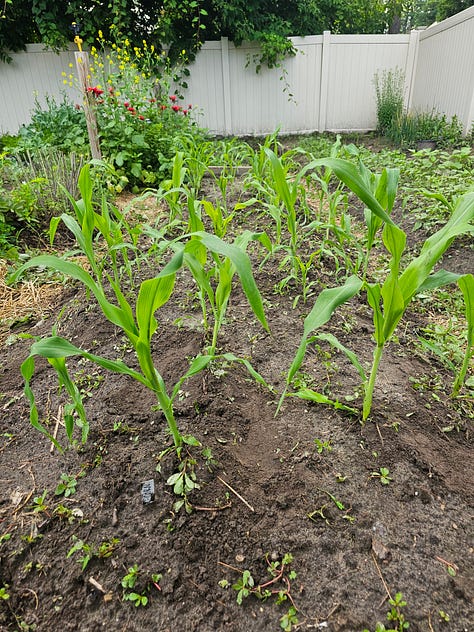
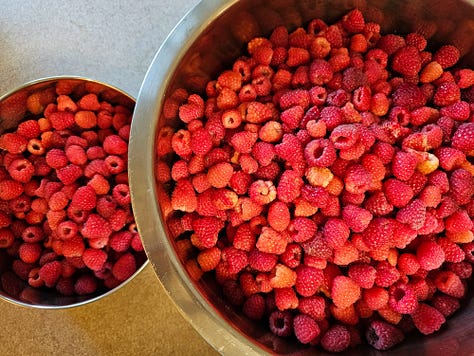
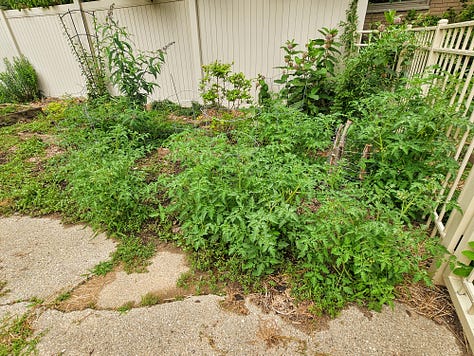

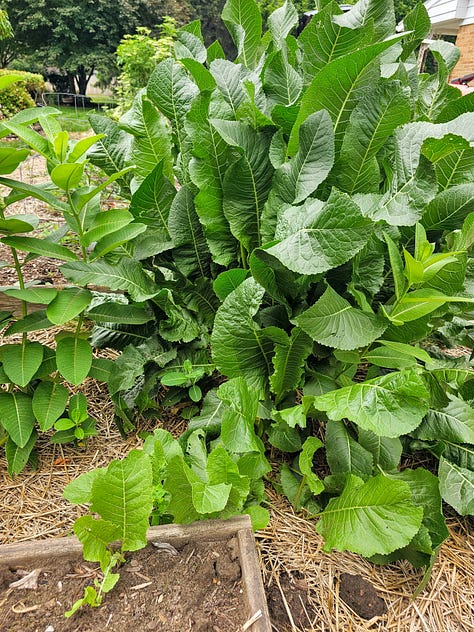
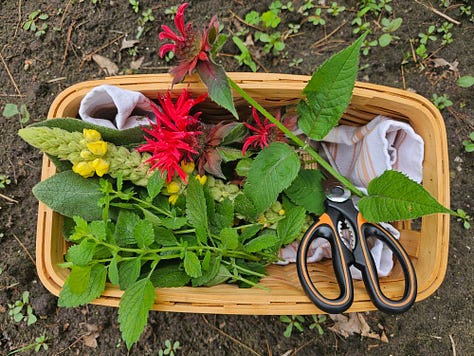

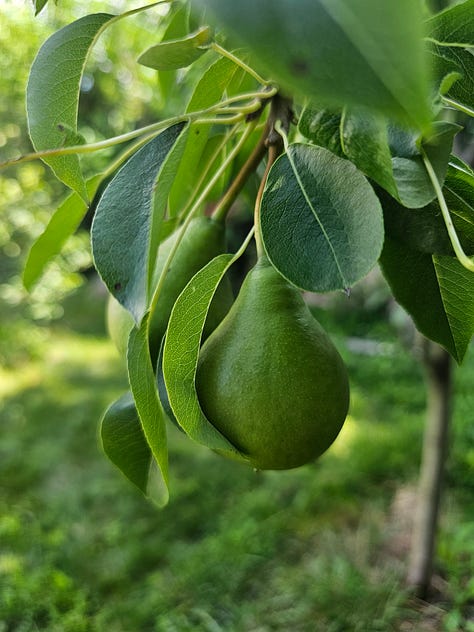
What’s growing in your garden?
Have you found this an odd summer for growing? What are you harvesting lately, and what are you looking most forward to eating?
Happy July gardening!
—Erin, in Michigan
Hard to believe from our place in history, but the initial exhibitions of Pre-Raphaelite paintings were deemed vulgar, disreputable, & blasphemous by such luminaries as Charles Dickens. Mallais’ Christ in the House of His Parents, 1850 (pictured below), was criticized for the slovenly appearance of wood shavings on the floor (in a carpenter’s shop!) and the common appearance of the models (like regular people! in positions of flexing & bending!).


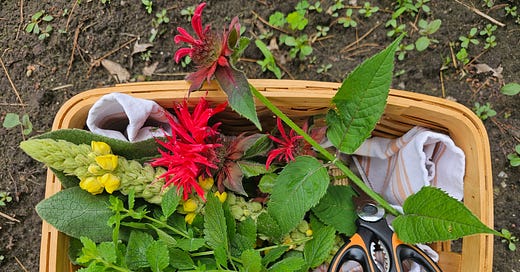


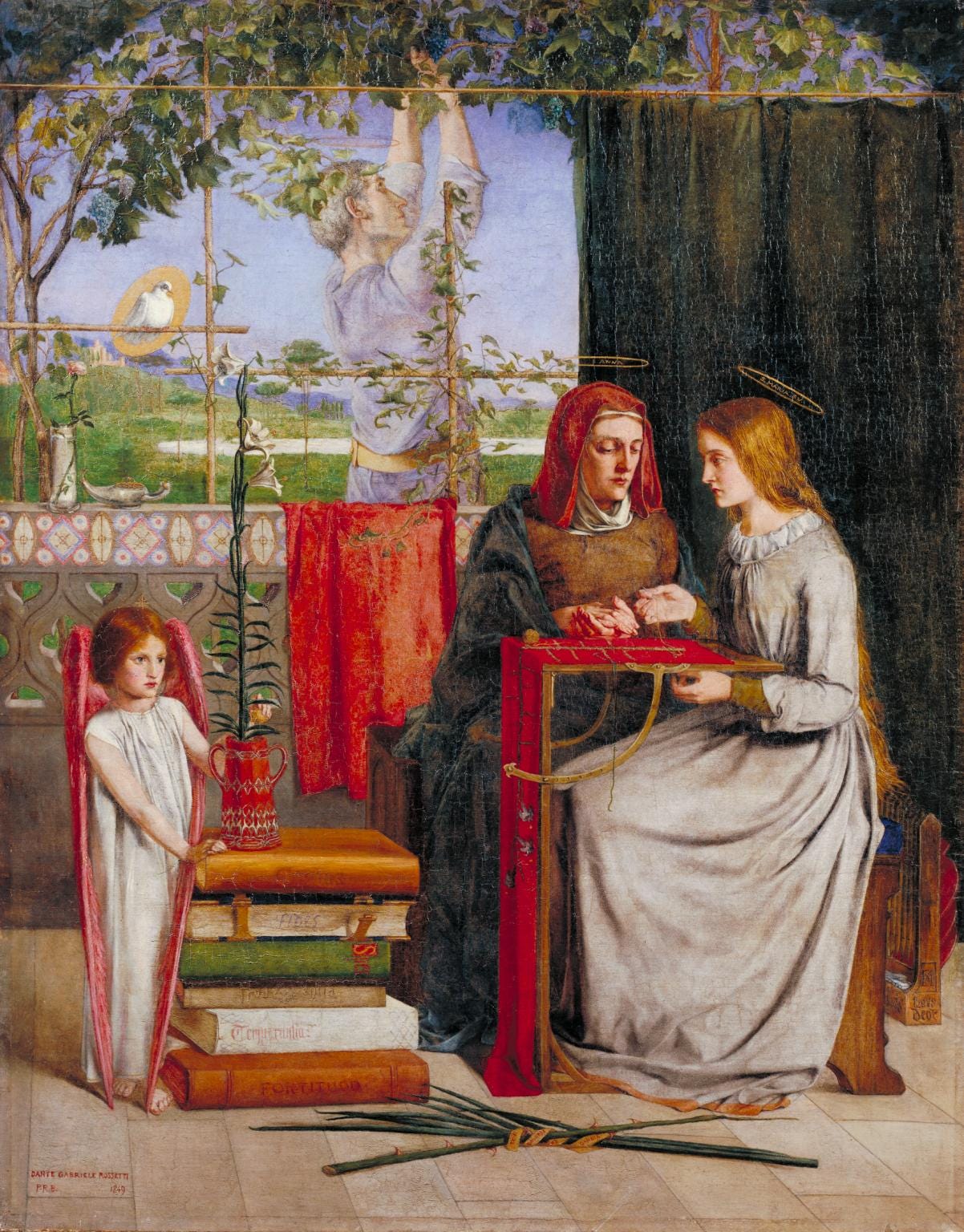
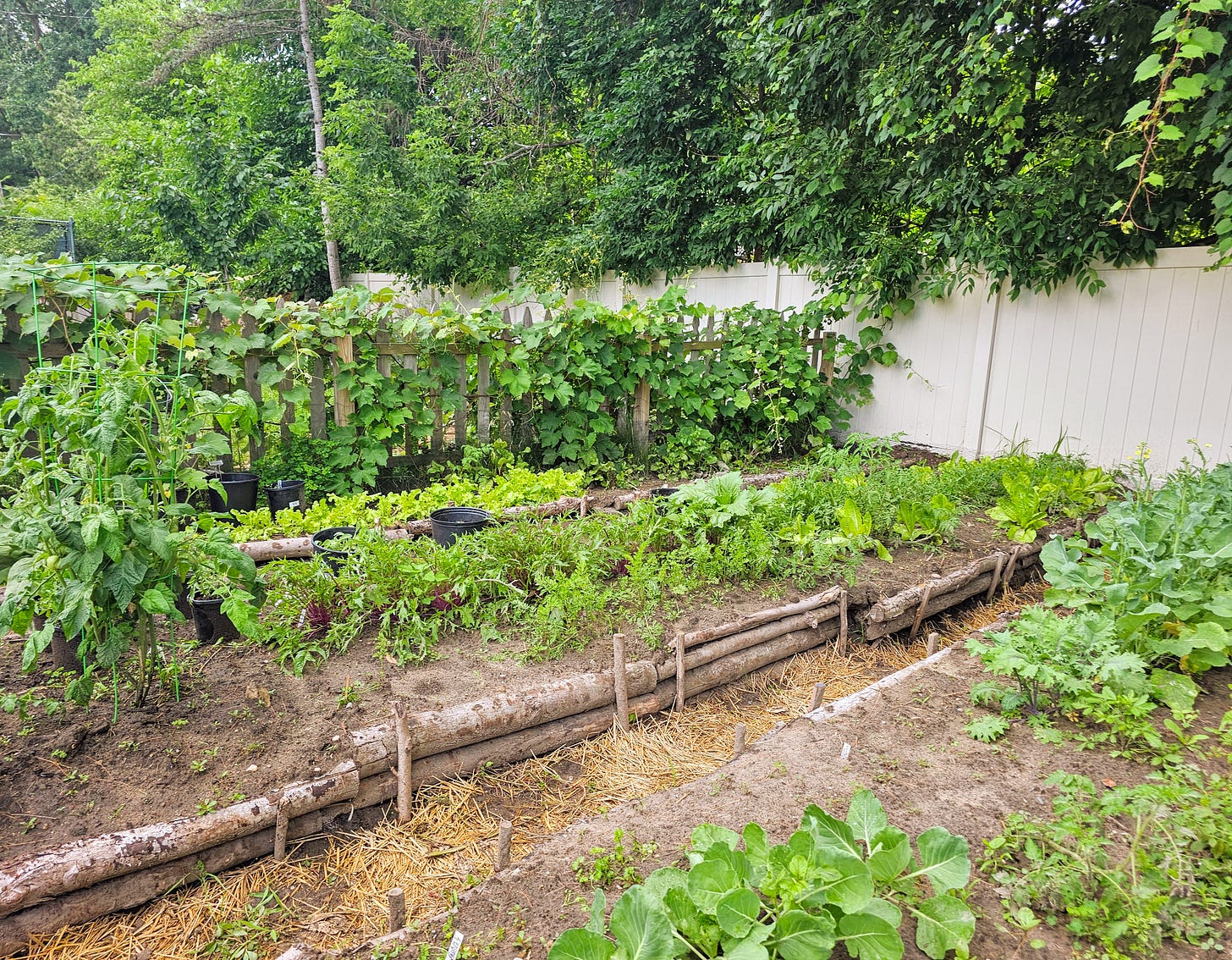
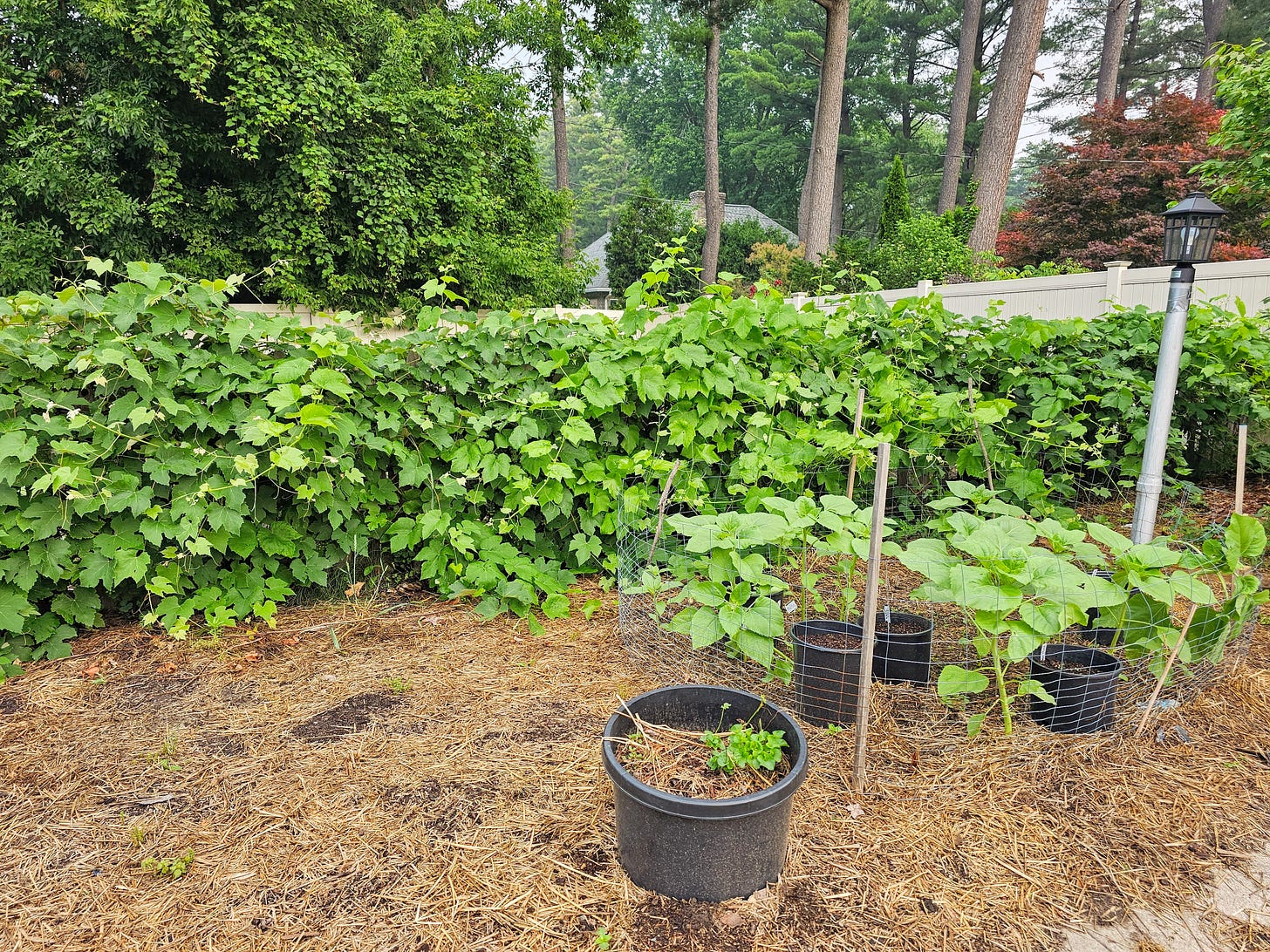

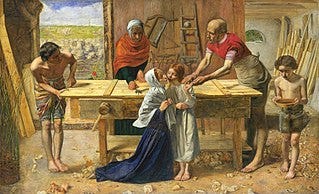
So much goodness here!! When I ask myself why I'm so drawn to earlier understandings of the calendar, especially the Anglo-Saxon perspective, I think it's because they had a less rigid way of looking at time...allowing space for nuance and complexity, seeing it as a cycle rather than a march of days. And, most notable for me, their time reckoning actually made sense in conjunction with the weather! (My gosh, I can really go on a tangent about the astronomical vs. meteorological reckonings of the seasons! Having the beginning of winter fixed at the winter solstice just makes no sense to me).
I'm a big fan of Eleanor's and LOVED "Winters in the World." I also learned recently from her, via her marvelous Patreon, that another term for July was Mædmonað - meadow-month" - since that's when the height of the hay harvest was occurring. Which really tickles me, since we're raking and baling like crazy now!
Your title for this post intrigued me and I loved learning about the poem it referenced. I found your meanderings delightful as well, both explaining the Anglo Saxon calendar and Victorian era art. Also, hurray for your hive's new queen bee!! Her majesty is the royal reward for your patience and trust in the resourcefulness of your wonderfully gentle bees. I am so amazed at the mysteries of what those buzzing little creatures are able to do. I mean, they somehow knew how to make a new queen!?!?! And she instinctively made and survived a mating flight?!?!?! Truly God is in His heaven, and despite arid June draught, Canadian travelling smoke, and worldly troubles, "All shall be well and all shall be well, and all manner of things shall be well."
I look forward to your posts and making time to savor reading them.